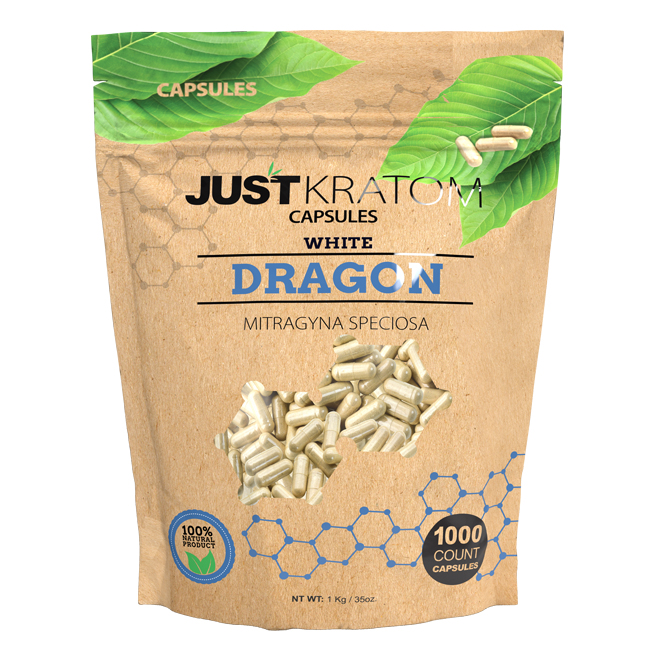What Makes Kratom Capsules Popular For Natural Pain Relief?
Chemical Composition and Potential Benefits
Kratom, a tropical tree native to Southeast Asia, has gained popularity in recent years as a natural remedy for pain relief. This interest stems from its unique chemical composition, which includes alkaloids like mitragynine and 7-hydroxymitragynine. These compounds are believed to interact with opioid receptors in the brain, producing analgesic effects.
Alkaloids
Alkaloids are naturally occurring organic compounds containing nitrogen that possess a wide range of biological activities. In the context of kratom, mitragynine and 7-hydroxymitragynine are prominent alkaloids responsible for its pain-relieving properties. These alkaloids are thought to bind to opioid receptors in the brain, mimicking the effects of opioid drugs like morphine. This interaction can lead to a reduction in pain perception, offering potential relief from chronic or acute pain conditions.
Analgesic Effects
Kratom’s analgesic effects are attributed to its unique chemical composition, specifically the presence of mitragynine and 7-hydroxymitragynine. These alkaloids exhibit opioid-like properties, meaning they bind to opioid receptors in the brain. This binding can modulate pain signals, potentially reducing pain perception and providing relief from various types of pain.
The specific mechanisms by which these alkaloids exert their analgesic effects are still under investigation. Research suggests that they may influence neurotransmitter release and modify pain pathways in the central nervous system.
Anti-inflammatory Properties
Kratom’s anti-inflammatory properties contribute to its appeal for natural pain relief. While research is ongoing, preliminary studies suggest that kratom alkaloids may possess anti-inflammatory effects. This potential benefit could play a role in reducing inflammation associated with pain conditions.
The exact mechanisms behind kratom’s anti-inflammatory actions are not yet fully understood. It is believed that kratom alkaloids may interact with inflammatory pathways in the body, potentially modulating the production of inflammatory mediators.
Forms of Kratom Consumption
Kratom offers various methods of consumption, each with its own advantages and considerations. Traditional preparations include chewing fresh kratom leaves or brewing them into a tea. Alternatively, users can opt for powdered kratom, which can be mixed into drinks or food. More recently, kratom capsules have gained popularity as a convenient and discreet way to consume kratom.
Powder
Kratom powder is a finely ground form of the kratom plant’s leaves. It can be easily mixed with beverages or food, allowing for flexible and customizable dosages. The powdered form offers a straightforward method of consumption compared to chewing leaves or brewing tea.
Tea
Tea is one common way to consume kratom. Dried kratom leaves are steeped in hot water, similar to how tea from other plants is prepared. This method allows the alkaloids in kratom to extract into the liquid, creating a beverage that can be enjoyed for its potential pain-relieving and mood-boosting effects.
Brewing kratom tea provides several benefits. It offers a gentle and controlled way to ingest kratom, as the brewing process allows for adjustments in concentration by adjusting the steeping time or amount of leaves used. The tea format also masks the slightly bitter taste of kratom, making it more palatable for some individuals.
Capsules
Kratom capsules have become increasingly popular due to their convenience and precise dosing. Each capsule typically contains a standardized amount of powdered kratom, eliminating the need for measuring or handling loose powder. This makes it easier to control the dosage, which is particularly beneficial for those new to kratom or seeking specific effects.
The encapsulation process also improves the palatability of kratom by masking its slightly bitter taste. Capsules offer a discreet way to consume kratom, as they resemble typical dietary supplements and can be easily taken on the go.
Advantages of Using Kratom Capsules for Pain Relief
Kratom capsules have emerged as a preferred method for those seeking natural pain relief due to their numerous advantages. The standardized dosing offered by capsules allows for precise control over intake, making them ideal for both newcomers and experienced users. Furthermore, the encapsulation process effectively masks the bitter taste often associated with kratom, enhancing the user experience.
Dosage Control
Kratom capsules offer several advantages for individuals seeking natural pain relief. One primary benefit is their ability to provide precise dosage control. Each capsule typically contains a predetermined amount of powdered kratom, eliminating the need for manual measuring or handling loose powder.
This standardization simplifies the process of finding the optimal dosage for individual needs, reducing the risk of accidental overconsumption. For individuals new to kratom, capsules offer a convenient and controlled way to explore its potential benefits without worrying about precise measurements or inconsistencies in potency.
Convenience and Portability
Kratom capsules have emerged as a preferred method for those seeking natural pain relief due to their numerous advantages. The standardized dosing offered by capsules allows for precise control over intake, making them ideal for both newcomers and experienced users. Furthermore, the encapsulation process effectively masks the bitter taste often associated with kratom, enhancing the user experience.
Kratom capsules offer several advantages for individuals seeking natural pain relief. One primary benefit is their ability to provide precise dosage control. Each capsule typically contains a predetermined amount of powdered kratom, eliminating the need for manual measuring or handling loose powder.
- Precise Dosing: Standardized amounts in each capsule ensure accurate intake and avoid accidental overconsumption.
- Convenience: Capsules are easy to take on-the-go, making them a practical option for managing pain throughout the day.
- Discreetness: Capsules resemble common dietary supplements, offering a discreet way to consume kratom.
- Taste Masking: The encapsulation process effectively hides the bitter taste of powdered kratom, improving palatability.
Discreetness
Kratom capsules have emerged as a popular choice for individuals seeking natural pain relief due to several key advantages they offer. One significant benefit is their ability to provide precise dosage control.
Each capsule typically contains a predetermined amount of powdered kratom, eliminating the need for manual measuring or handling loose powder. This standardization simplifies the process of finding the optimal dosage for individual needs, reducing the risk of accidental overconsumption. For individuals new to kratom, capsules offer a convenient and controlled way to explore its potential benefits without worrying about precise measurements or inconsistencies in potency.
Beyond precise dosing, kratom capsules also offer convenience as they are easy to take on-the-go, making them a practical option for managing pain throughout the day. Their discreet nature, resembling common dietary supplements, allows for comfortable consumption in various settings. Additionally, the encapsulation process effectively masks the bitter taste often associated with powdered kratom, enhancing the user experience.

Safety and Considerations
While kratom shows promise as a natural pain relief option, it’s essential to approach its use with caution and awareness. Understanding potential risks and side effects is crucial before incorporating kratom into your wellness regimen.
Potential Side Effects

Safety and Considerations:
It’s important to consult a healthcare professional before using kratom, especially if you have pre-existing medical conditions or are taking other medications. Kratom can interact with certain drugs, potentially leading to adverse effects.
Potential Side Effects:
Like any substance, kratom can cause side effects, which may vary depending on dosage, individual sensitivity, and method of consumption.
Some commonly reported side effects include:
- Nausea
- Constipation
- Drowsiness
- Dry mouth
- Headache
- Anxiety
- Increased heart rate
In some cases, kratom misuse can lead to more serious complications, including:
- Addiction
- Liver damage
- Respiratory depression
- Seizures
Drug Interactions
While kratom shows promise as a natural pain relief option, it’s essential to approach its use with caution and awareness. Understanding potential risks and side effects is crucial before incorporating kratom into your wellness regimen.
Safety and Considerations:
It’s important to consult a healthcare professional before using kratom, especially if you have pre-existing medical conditions or are taking other medications. Kratom can interact with certain drugs, potentially leading to adverse effects.
Potential Side Effects:
Like any substance, kratom can cause side effects, which may vary depending on dosage, individual sensitivity, and method of consumption.
Some commonly reported side effects include:
- Nausea
- Constipation
- Drowsiness
- Dry mouth
- Headache
- Anxiety
- Increased heart rate
In some cases, kratom misuse can lead to more serious complications, including:
- Addiction
- Liver damage
- Respiratory depression
- Seizures
Legality and Regulations
While kratom shows promise as a natural pain relief option, it’s essential to approach its use with caution and awareness. Understanding potential risks and side effects is crucial before incorporating kratom into your wellness regimen.
Safety and Considerations:
It’s important to consult a healthcare professional before using kratom, especially if you have pre-existing medical conditions or are taking other medications. Kratom can interact with certain drugs, potentially leading to adverse effects.
Potential Side Effects:
Like any substance, kratom can cause side effects, which may vary depending on dosage, individual sensitivity, and method of consumption.
- Nausea
- Constipation
- Drowsiness
- Dry mouth
- Headache
- Anxiety
- Increased heart rate
In some cases, kratom misuse can lead to more serious complications, including:
- Addiction
- Liver damage
- Respiratory depression
- Seizures
Legality and Regulations:
Kratom’s legal status varies widely across the globe. Some countries have completely banned kratom, while others have regulations surrounding its sale, possession, or use. It’s crucial to be aware of the laws in your specific location before using kratom.
Scientific Research and Future Directions
The growing popularity of kratom capsules for natural pain relief can be attributed to their convenience, precise dosing, and potential effectiveness. Kratom, a tropical tree native to Southeast Asia, contains alkaloids like mitragynine and 7-hydroxymitragynine that are believed to interact with opioid receptors in the brain, producing analgesic effects.
Current Evidence on Pain Relief Benefits
The use of kratom for pain relief is gaining popularity, but it’s essential to understand both its potential benefits and risks. Scientific research on kratom is ongoing, and more studies are needed to fully elucidate its mechanisms of action, long-term effects, and optimal dosages.
Current evidence suggests that kratom may offer analgesic benefits by interacting with opioid receptors in the brain. However, further research is necessary to confirm these findings and explore potential interactions with other medications or underlying health conditions.
Future directions for research include:
- Conducting large-scale clinical trials to evaluate kratom’s efficacy and safety for various types of pain.
- Investigating the specific mechanisms by which kratom alkaloids exert their analgesic effects.
- Determining optimal dosages and treatment regimens for different individuals and conditions.
- Exploring potential long-term health effects of kratom use.
- Assessing the risk of dependence or addiction associated with kratom consumption.
Areas for Further Investigation
Scientific research on kratom is still in its early stages, leaving several avenues for further investigation.
One key area is a deeper understanding of how kratom’s alkaloids interact with the body. While it’s known that mitragynine and 7-hydroxymitragynine bind to opioid receptors, more research is needed to pinpoint the precise mechanisms involved in pain relief. This includes exploring potential interactions with other neurotransmitters and pathways involved in pain processing.
Another crucial area of research is determining optimal dosages and treatment regimens for different types of pain and individual patient characteristics. Current evidence suggests that kratom may be effective for both acute and chronic pain, but individualized dosing strategies are needed to maximize benefits while minimizing potential risks.
Long-term safety and potential side effects also require further study. More research is needed to assess the long-term health consequences of regular kratom use, including its impact on organs like the liver and potential for addiction or dependence.
Finally, research should focus on clarifying the legal status of kratom. Given its varying legality around the world, establishing clear guidelines and regulations will be crucial to ensure safe and responsible use while balancing individual access with public health concerns.
Purchase Kratom capsules for improved health
- Gummy Smile Treatment – Gum Contouring Near Petersham, Surrey - September 25, 2025
- Is Brow Lift Treatment Painful And What Is The Recovery Process - September 24, 2025
- Filorga NCTF Skin Rejuvenation In Walton-on-Thames, Surrey - September 23, 2025
Author
Related Posts

How Kratom Capsules Can Help With Post-Workout Recovery
Potential Benefits of Kratom for Post-Workout Recovery For athletes and fitness enthusiasts, post-workout recovery is crucial for optimal performance and muscle repair....
Read out all